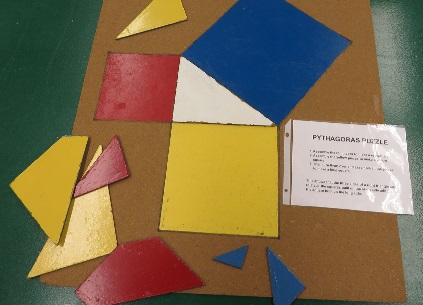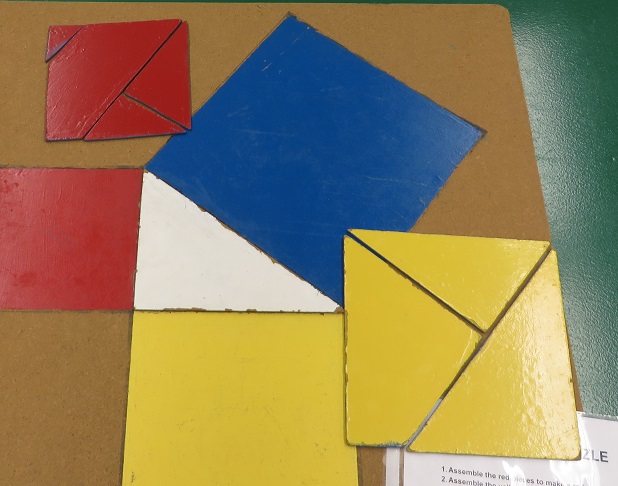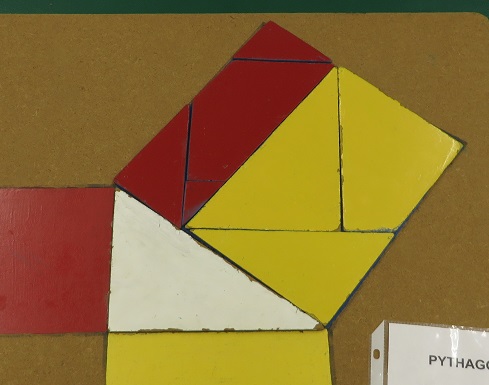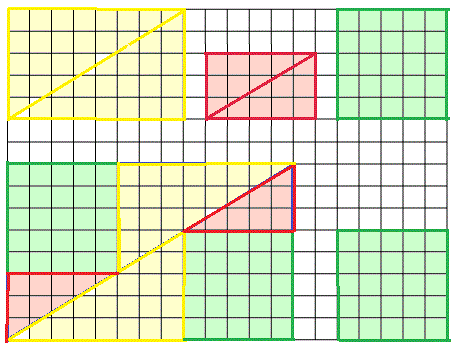
Instructions for:
Pythagoras' Puzzle
"Pythagoras' Puzzle" consists of a board with a diagram on it and seven puzzle pieces to place on it. The diagram shows a right triangle (in white) with red, yellow, and blue squares constructed on the three sides. According to Pythagoras' theorem, the area of the blue square is equal to the sum of the areas of the red and yellow squares. To demonstrate this, the red puzzle pieces can be used to make a red square and the yellow puzzle pieces can be used to make a yellow square, and then they can be turned over and used to make a blue square.
 |
 |
| Making two squares | Making one square |
This isn't a complete proof of Pythagoras' theorem, because it isn't clear that the parts exactly cover the squares (in fact, they don't, because they haven't been cut accurately), and because the rule used for cutting up the squares doesn't work for all right triangles (but it does work when none of the angles are smaller than 20 degrees).
As a warning about the dangers of proofs by cutting things up, here's a joke:

At the bottom right there is a rectangle of area 13 x 8 = 104, which has been cut up into 6 pieces. Around the border are the 6 pieces, reassembled into a rectangle of area 8 x 5 = 40, 5 x 3 = 15, and two squares of area 5 x 5= 25. But 40 + 15 + 25 + 25 = 105, so the areas are not equal. How can this be?
Copyright 2014 Joseph Straley - The University of Kentucky Physics Petting Zoo